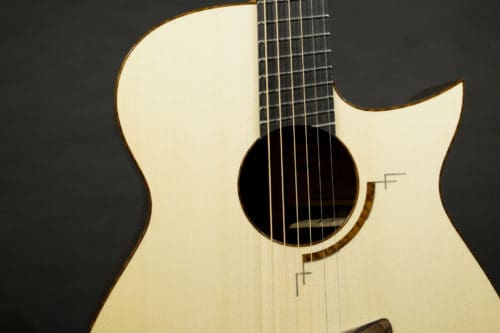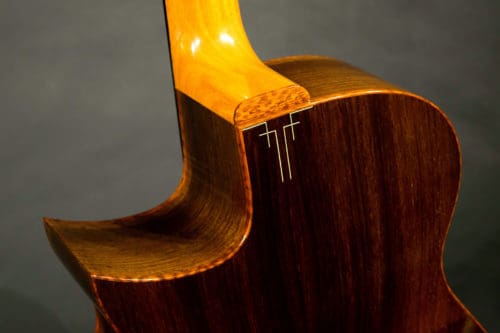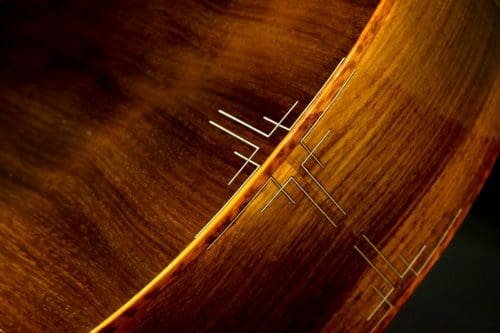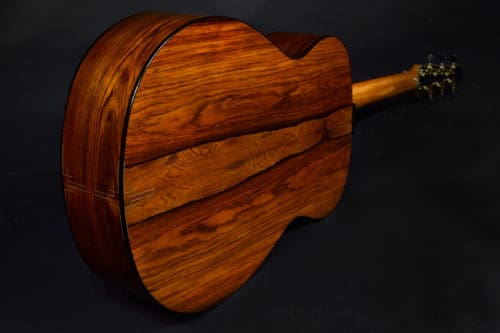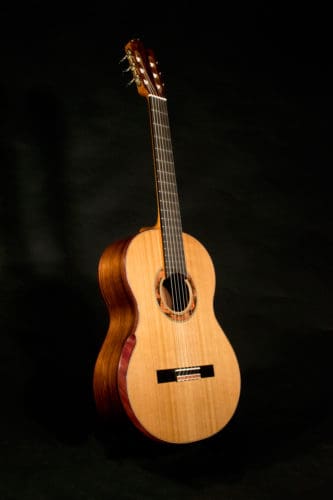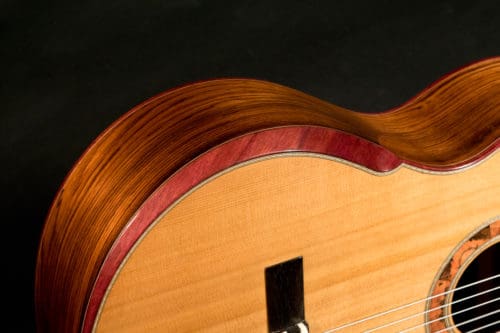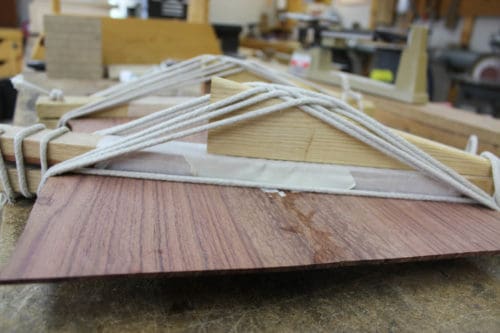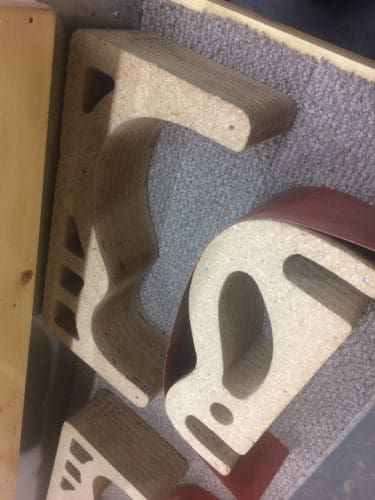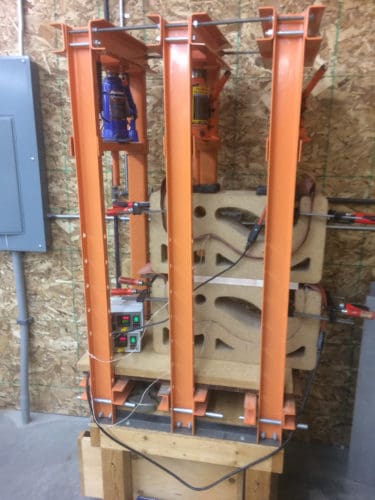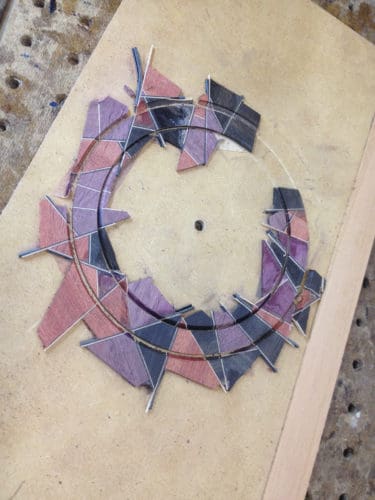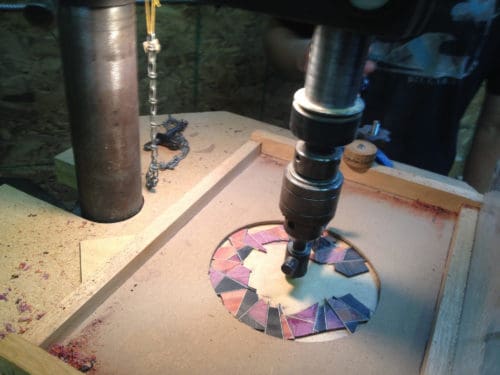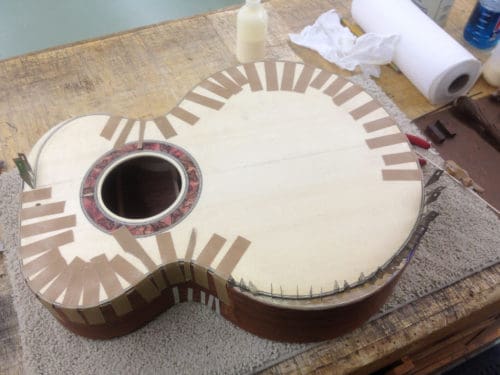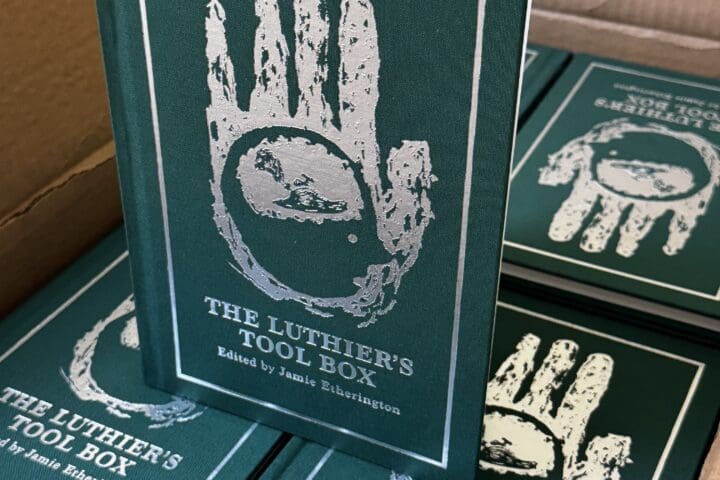Have we mentioned the La Conner Guitar Festival recently? We have, haven’t we… Allow us to dip back into that well once again for another installment of our Bench Press column, this time with Sam Guidry, a builder who came up through Bryan Galloup’s legendary school and shop. We got to meet Sam and check out one of his instruments at La Conner, where he was set up right next to Bryan. Both the man and the guitar were impressive, and we’re very happy to get this chance to subject him to the Bench Press treatment.
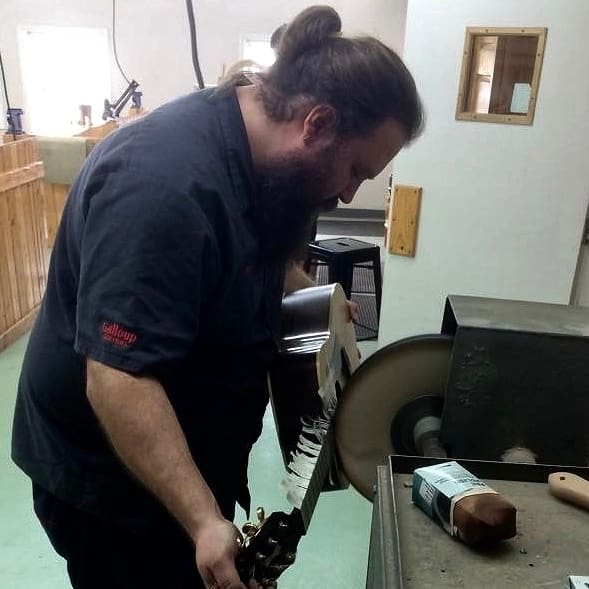
Fretboard Journal: What’s on your bench right now?
Sam Guidry: Right now I am trying to finish up my 2017 work which included an [Ignacio] Fleta-inspired classical and a padauk SG-2. Both feature French polished tops so I have been French polishing a little each day for the last few weeks. I will be attending both the Artisan Guitar Show in Pennsylvania and the La Conner Guitar Festival in Washington in the Spring, so I have started thinking about the guitars I will make for those shows.
FJ: How did you get started?
SG: I got started in lutherie in 1998 by attending the Galloup School of Guitar Building and Repair. I was just 18 and had the typical mind set of a young person, all energy and no direction! Bryan and Susan Galloup were kind enough to offer me an apprenticeship. I had no idea at the time that nearly 20 years later I would be where I am today.
FJ: Where do you find inspiration?
SG: I try to find inspiration outside the guitar world. I find if you keep your eyes and mind open, you can find inspiration in the strangest places. For a recent series of guitars I call minimalist deco, the idea for the decoration came from some frosted glass in a Jimmy John’s sandwich shop! Once I have a vague idea of what I am trying to accomplish, I will think about it as I fall asleep. Sometimes the idea materializes quickly, other times I may think about a design for months or even years. Once I have the design visualized in my minds eye, I am ready to execute it.
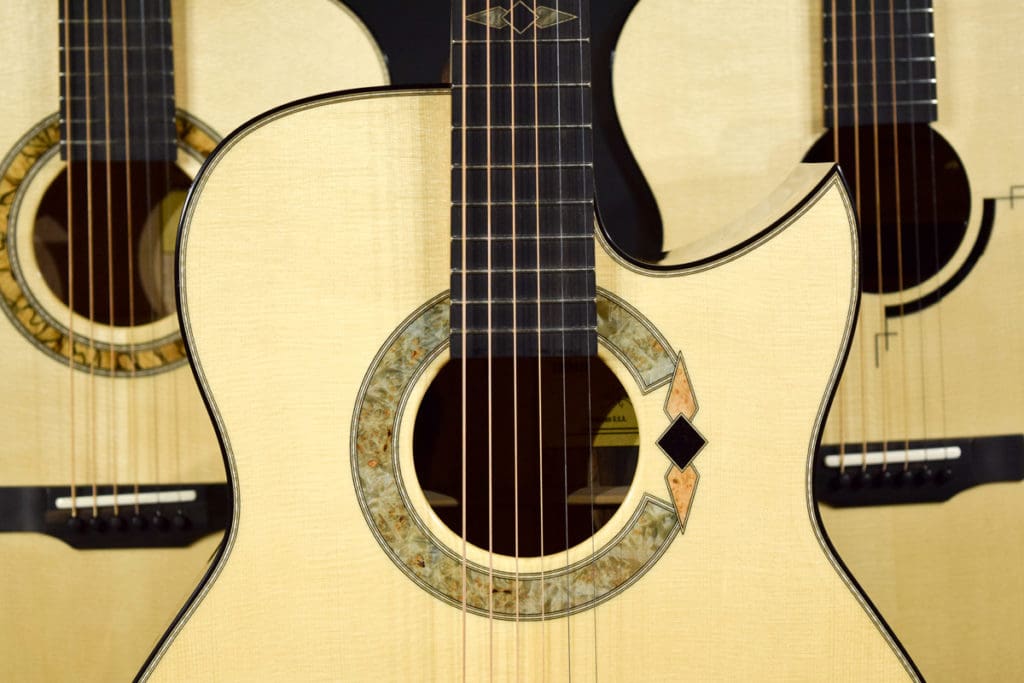
FJ: You’re building steel string and classical guitars; do you have to adapt your techniques much for one or the other?
SG: A large part of my build style is to use engineering principles to help guide my builds. I always tune my body resonances to specific pitches to avoid wolf tones and so that is similar for each type of guitar, but how you tune and voice the instruments is quite different.
FJ: Tell us about your shop…
SG: I feel really lucky to have the opportunity to build out of the Galloup Guitar shop in Big Rapids, Michigan. I have been at the shop for almost 20 years and have seen it grow from a couple of rooms in a strip mall with only the basic tools to a modern, state-of-the-art guitar building shop. Our shop is fully climate controlled and equipped with all of the heavy tooling a guitar maker could ever want. We have large band saws for re-sawing our own wood, an industrial spray booth, two wide-belt thickness sanders and all the routers and jigs and fixtures you could ever need. The Galloup shop is also the home of CNC Fretboards, so I have access to CNC work when I need it. All in all, I am spoiled.
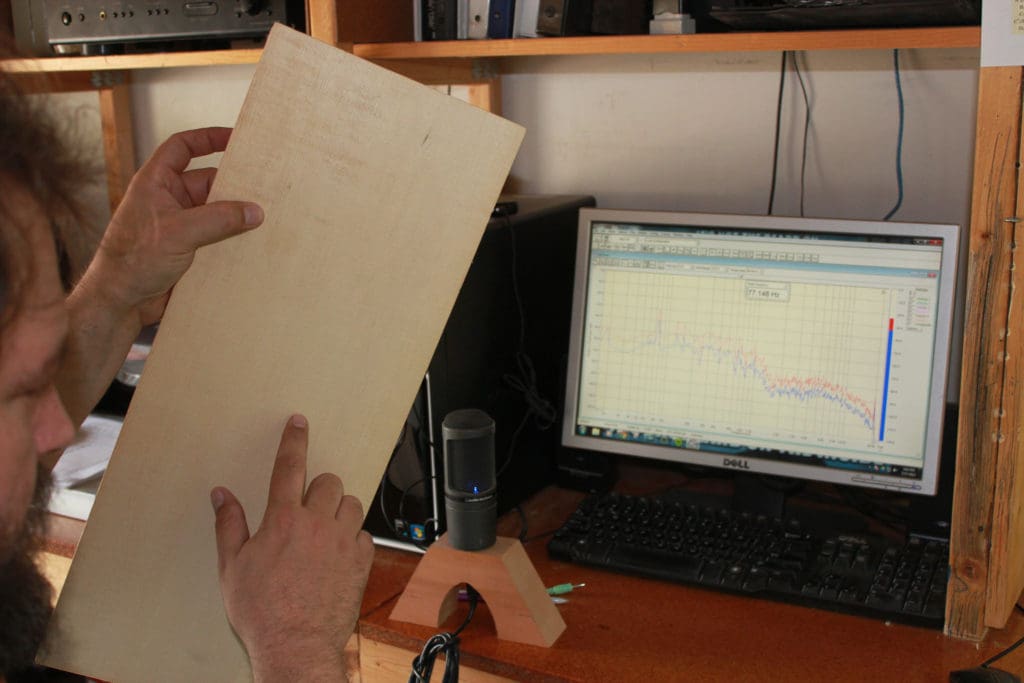
FJ: Do you have a particular philosophy about wood/materials?
SG: My philosophy on wood is grounded in material science. Although aesthetics are important, I value the material properties of the piece more than its looks. Every piece of wood I use for a guitar is measured for its material properties, such as density, modulus of elasticity and speed of sound. This allows me to choose wood that is ideal for the sound I am trying to achieve and to be able to reproduce it over and over again.
FJ: Do you have a favorite guitar that’s crossed your bench?
SG: In working at Galloup Guitars I have had the opportunity to see many great examples of vintage guitars. The rarest was a Martin 1930 OM-45 that was once owned by the Eisenhower White House. I’ve also had the chance to see lots of old Gibsons and Martins, a few D’Angelicos and more Squier Strats than I care to think about. The OM-45 sticks out in my mind.
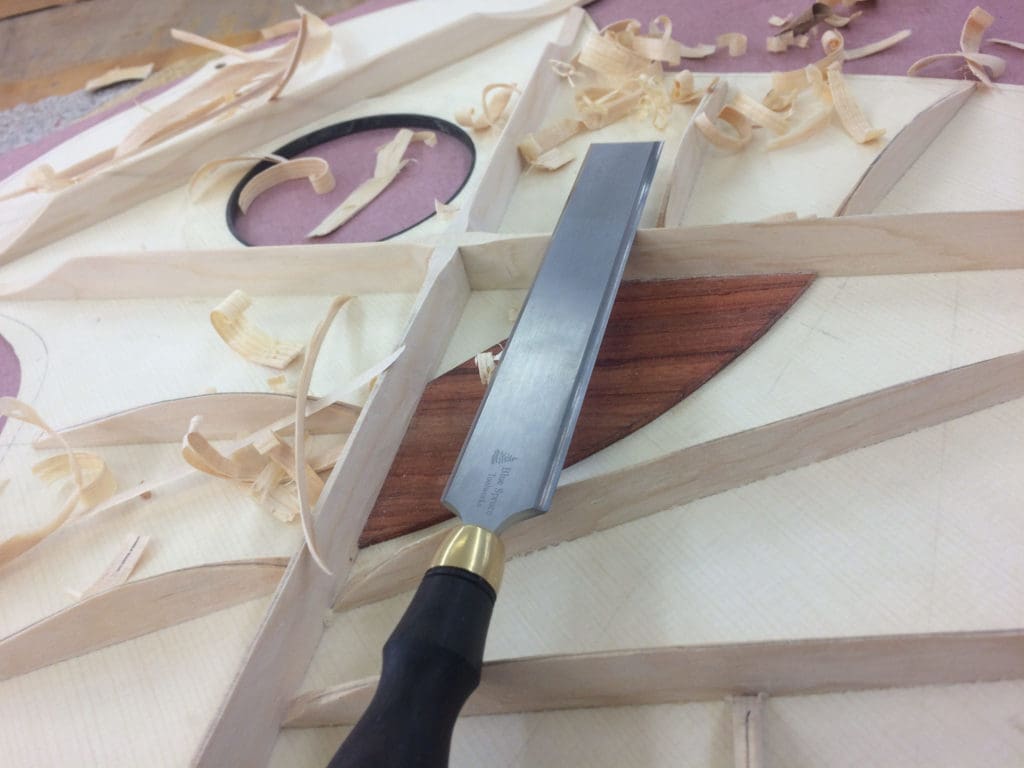
FJ: We’ve heard that you and Bryan recently took some extraordinary steps in anazlying some vintage instruments. How’d that go?
SG: Bryan and I recently had an opportunity to CT scan a number of vintage instruments. Among others, we scanned a ‘40s herringbone, a ‘30s D-18, and a ‘40s 000-42 once owned by Neil Young (or so the legend goes). Beyond being able to know precise thickness and brace location, we hope to gather more insight on the wood that was used during this era and how it may change over time. So far we are still analyzing the data but we are hopeful that it will bear fruit.
FJ: Are there any upcoming projects that you’re particularly excited about?
SG: At our shop we are always doing something exciting and now is no different. I have a couple of guitar shows in early 2018 so those guitars are going to be fun (once I figure out what they are going to be) but right now I am most excited by the results of the CT scans. One of the goals of the scans is to help us create a method that will allow us to recreate any vintage instrument, not only matching specs of the instrument but truly replicating its sonic signature. Over the next year we hope to be able to put that theory to the test by accurately reproducing a ’42 Herringbone.
